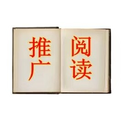
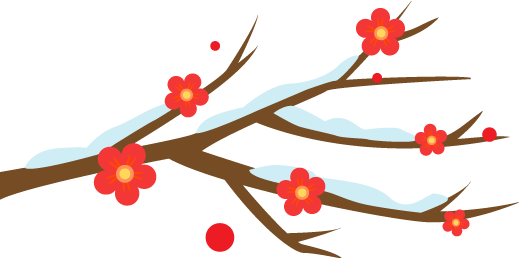
Issue 19—The Historical Transmission of Materia Medica Literature (Part 3) (with audio)
In the previous two issues of Exploring Traditional Culture, we delved into the historical transmission of materia medica literature before the Tang Dynasty and during the Song, Jin, and Yuan Dynasties. Click the links below to revisit ☟
Exploring Traditional Culture | Issue 17: The Historical Transmission of Materia Medica Literature (Part 1)
Exploring Traditional Culture | Issue 18: The Historical Transmission of Materia Medica Literature (Part 2)
This issue of Exploring Traditional Culture introduces the third part of the historical transmission of materia medica literature—literature from the Ming and Qing Dynasties.
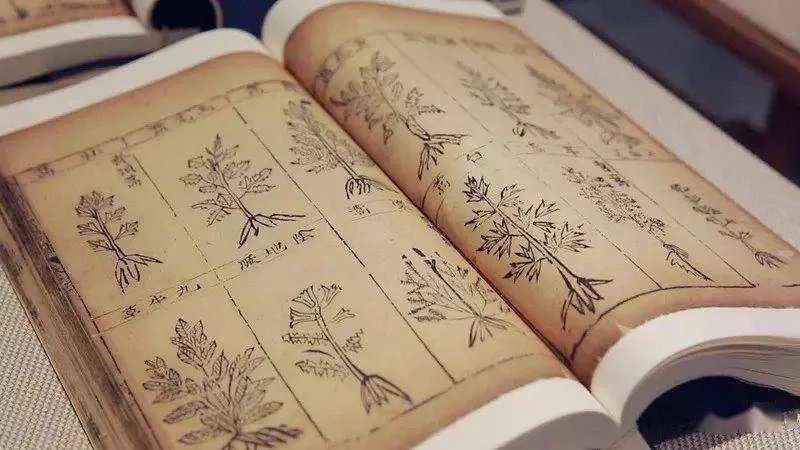
The materia medica of the Ming and Qing Dynasties was rich and diverse, not only in quantity but also in the breadth of academic scope. A significant proportion of the materia medica was clinically practical, and the literature on food and emergency herbs was also flourishing. The compilation and preservation of the Shen Nong Ben Cao Jing (Shen Nong’s Classic of Materia Medica) received greater attention during the Ming and Qing Dynasties, and many compilations of the Ben Cao Gang Mu (Compendium of Materia Medica) emerged in the Qing Dynasty.
The Essentials of Materia Medica
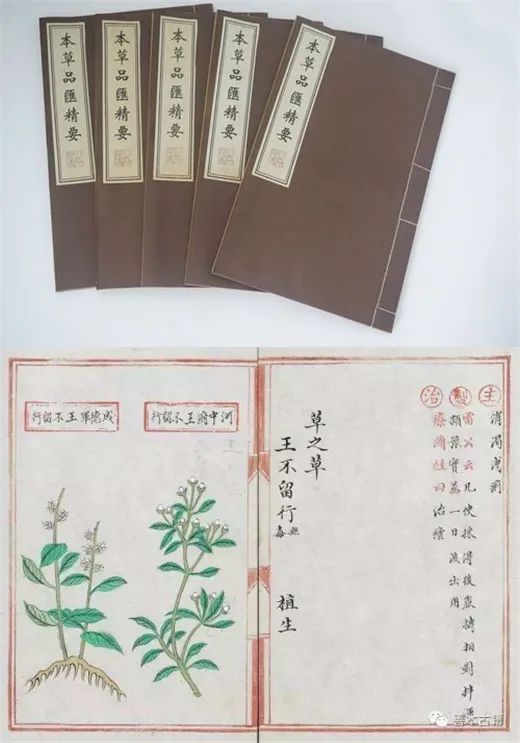
Commissioned by Emperor Xiaozong, Liu Wentai of the Ming Tai Hospital led the compilation, with 49 contributors including officials, physicians, scholars, artists, and eunuchs. The compilation discussions began in the sixteenth year of the Hongzhi era (1503) and were completed in the eighteenth year (1505). This is the only large-scale official comprehensive materia medica of the Ming Dynasty, consisting of 1 volume of preface, general principles, and table of contents, and 42 volumes of main text. The main text discusses various medicinal substances, with a total of 1815 entries listed in the directory, and 1809 actually discussed in the text. The appendix includes content such as “Toxicity of Various Herbs and Minerals,” “Dietary Restrictions for Medicinal Use,” “Medicinal Properties and Antagonisms,” and “Historical Place Names and Their Modern Equivalents.” The book contains 1358 color illustrations, making it the largest ancient colored materia medica atlas in China.
Ben Cao Gang Mu
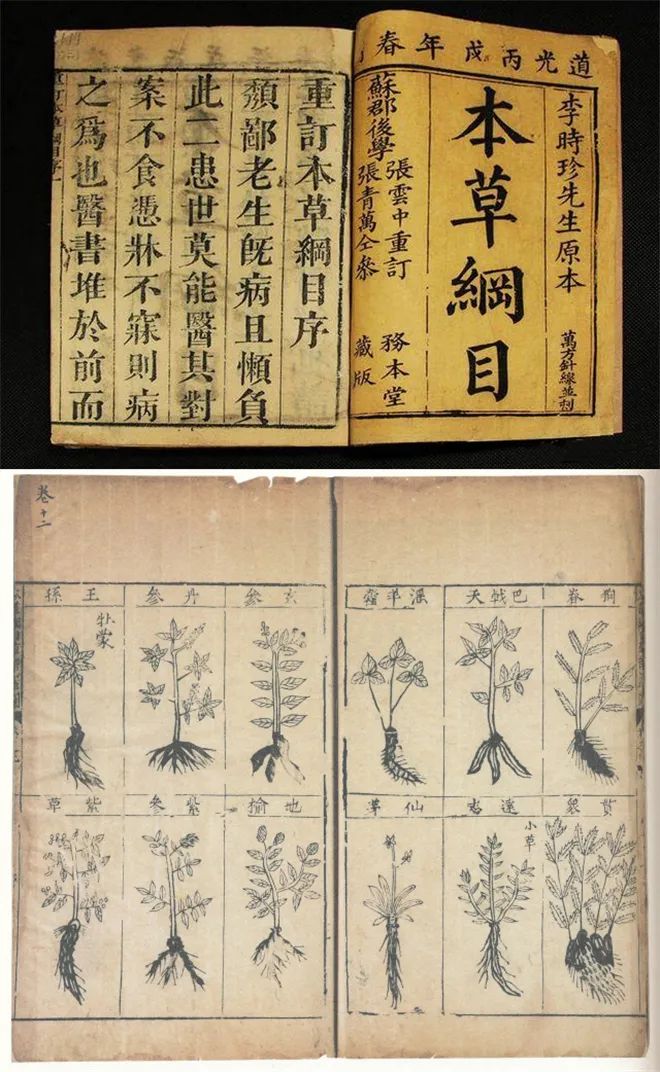
Authored by Li Shizhen, a renowned physician from Qizhou (present-day Hubei Qizhou), this monumental work was completed over 27 years from the 31st year of the Jiajing era (1552) to the 6th year of the Wanli era (1578), undergoing three revisions. The book consists of 2 volumes of preface, 2 volumes on the treatment of diseases, 46 volumes of main text, and 2 volumes of illustrations. The preface introduces materia medica works and pharmacological theories prior to the Ming Dynasty. The main text includes 1892 medicinal substances, based on the Jing Shi Zheng Lei Bei Ji Ben Cao (Emergency Materia Medica), with 374 new substances added and 11096 prescriptions included. The compilation categorizes the substances into 16 sections: water, fire, earth, metal and stone, herbs, grains, vegetables, fruits, wood, utensils, insects, scales, birds, beasts, humans. Each section further classifies substances into 60 categories based on similar properties. Each entry discusses the name, collection, verification, preparation, properties, indications, discoveries, and additional prescriptions of the medicinal substance. It is a comprehensive work that represents the culmination of materia medica studies before the Ming Dynasty and remains one of the most influential ancient materia medica texts.
Shen Nong Ben Cao Jing Shu
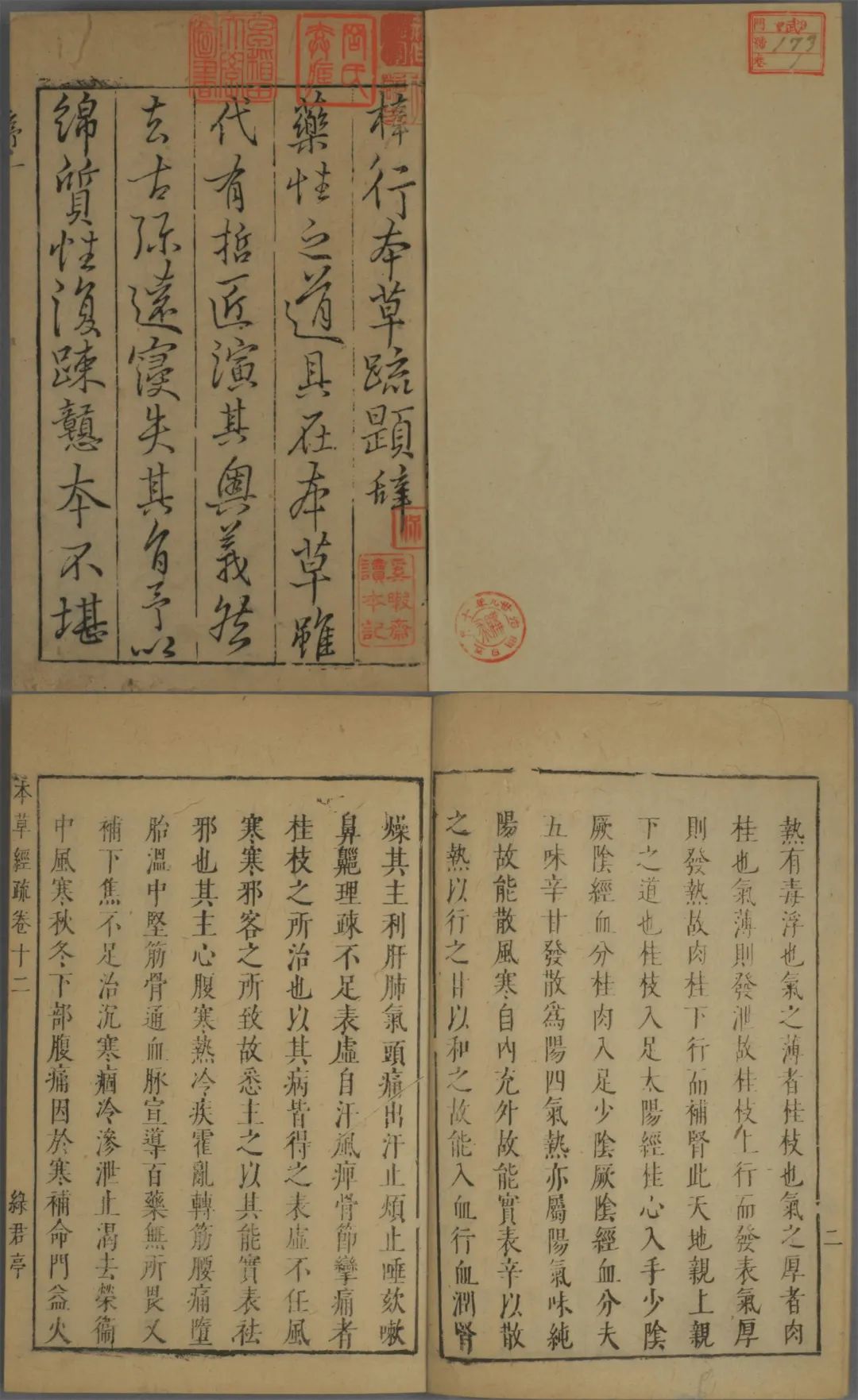
Abbreviated as Ben Cao Jing Shu, authored by Miao Xiyong, a notable physician from Jiangsu Yushan, this book was completed around the third year of the Tianqi era (1623) and first published in the fifth year (1625). It consists of 30 volumes, with the first two volumes serving as a “continuation of the preface,” summarizing medical theories based on the Huang Di Nei Jing (Yellow Emperor’s Classic of Internal Medicine) and the author’s clinical experiences. Volumes three to thirty discuss various medicinal substances, detailing their proper names, properties, effects, and preparation methods, along with annotations on “indications” and “interactions.” This book provides in-depth research on the interpretation of classic texts and the analysis of medicinal properties.
Ben Cao Bei Yao
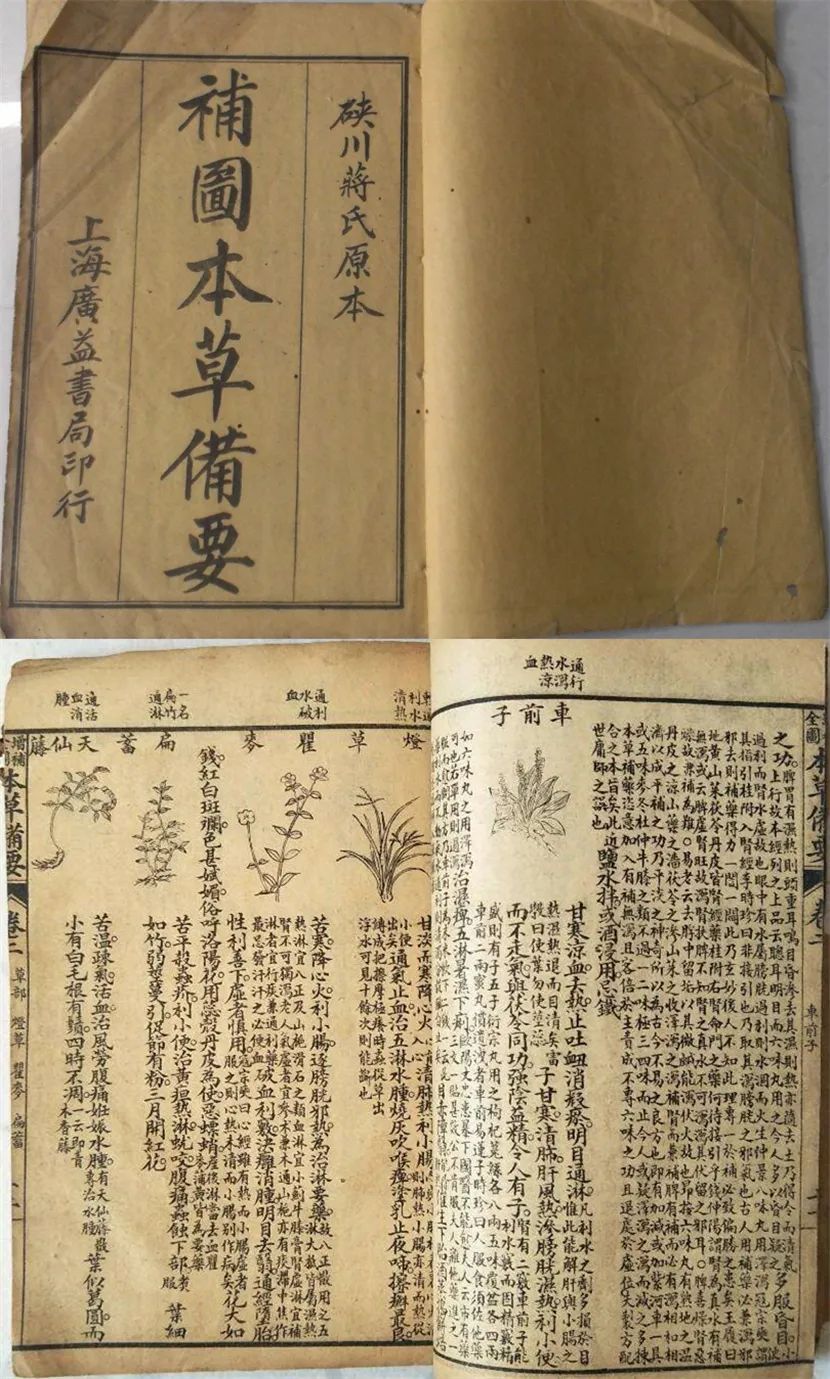
Authored by Wang Ang, this book was first published during the Kangxi era and revised and published in the thirty-third year (1694). It consists of 8 volumes, serving as a popular comprehensive materia medica. The initial publication included 400 medicinal substances, which increased to 478 after revisions. Each entry begins with a brief description of its main effects, followed by a systematic discussion of properties, colors, meridians, functions, indications, and contraindications, interspersed with annotations referencing the contents of the Ben Cao Gang Mu and Shen Nong Ben Cao Jing Shu as well as various theories from the Jin and Yuan Dynasties. Citations are mostly noted, and the author’s insights are marked as “Ang’s notes.”
Ben Jing Feng Yuan
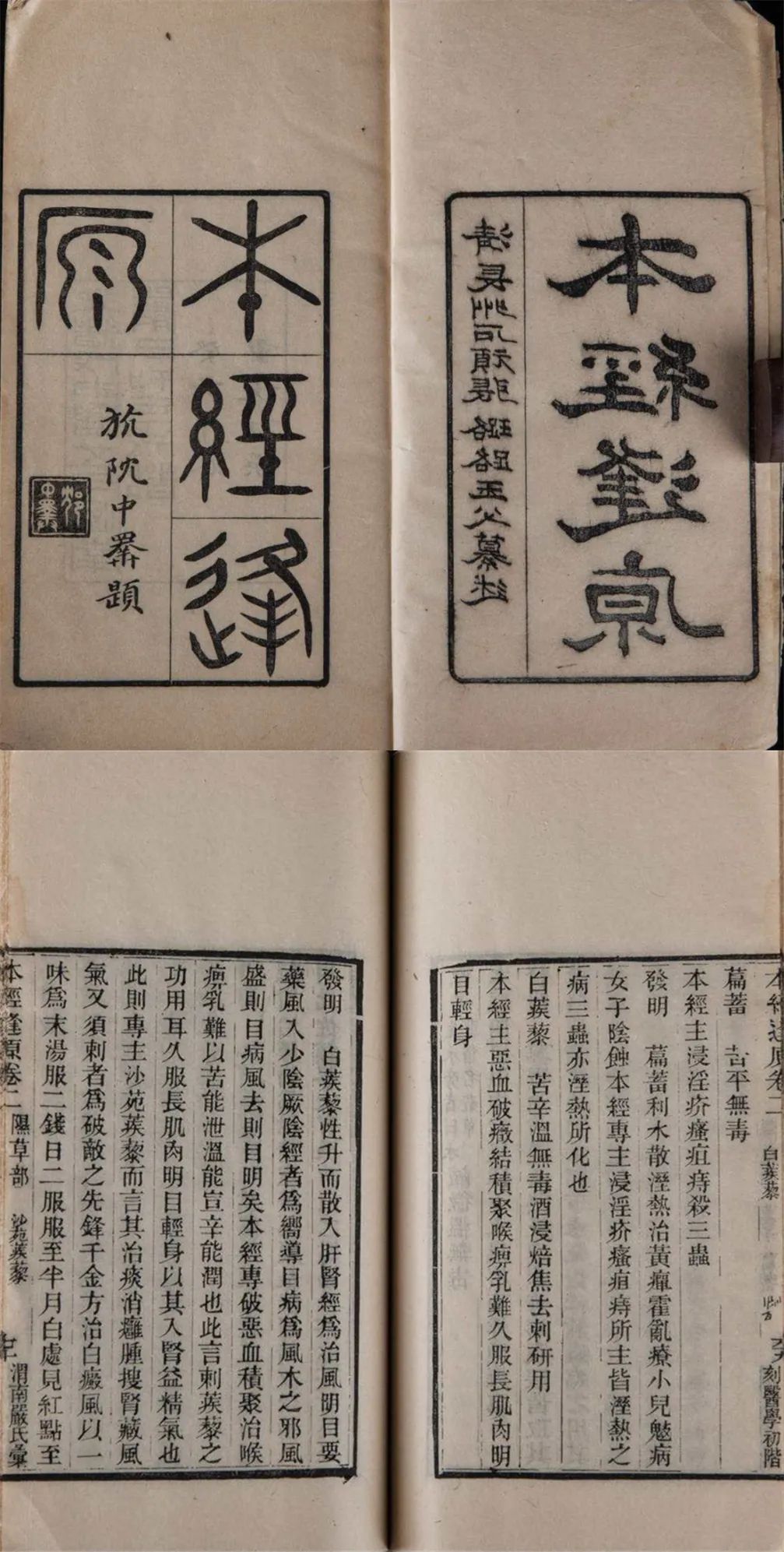
Authored by Zhang Lu, a prominent physician from the Qing Dynasty, this book was completed in the thirty-fourth year of the Kangxi era (1695). It consists of 4 volumes and is a comprehensive materia medica work. Although titled “Ben Jing,” it includes few substances from the Shen Nong Ben Cao Jing, focusing instead on commonly used clinical medicines, totaling 784 entries. The book is organized into 32 sections, resembling the structure of the Ben Cao Gang Mu, with a focus on discussing pharmacological properties, including insights from Zhang’s clinical experiences.
Shen Nong Ben Cao Jing Bai Zhong Lu
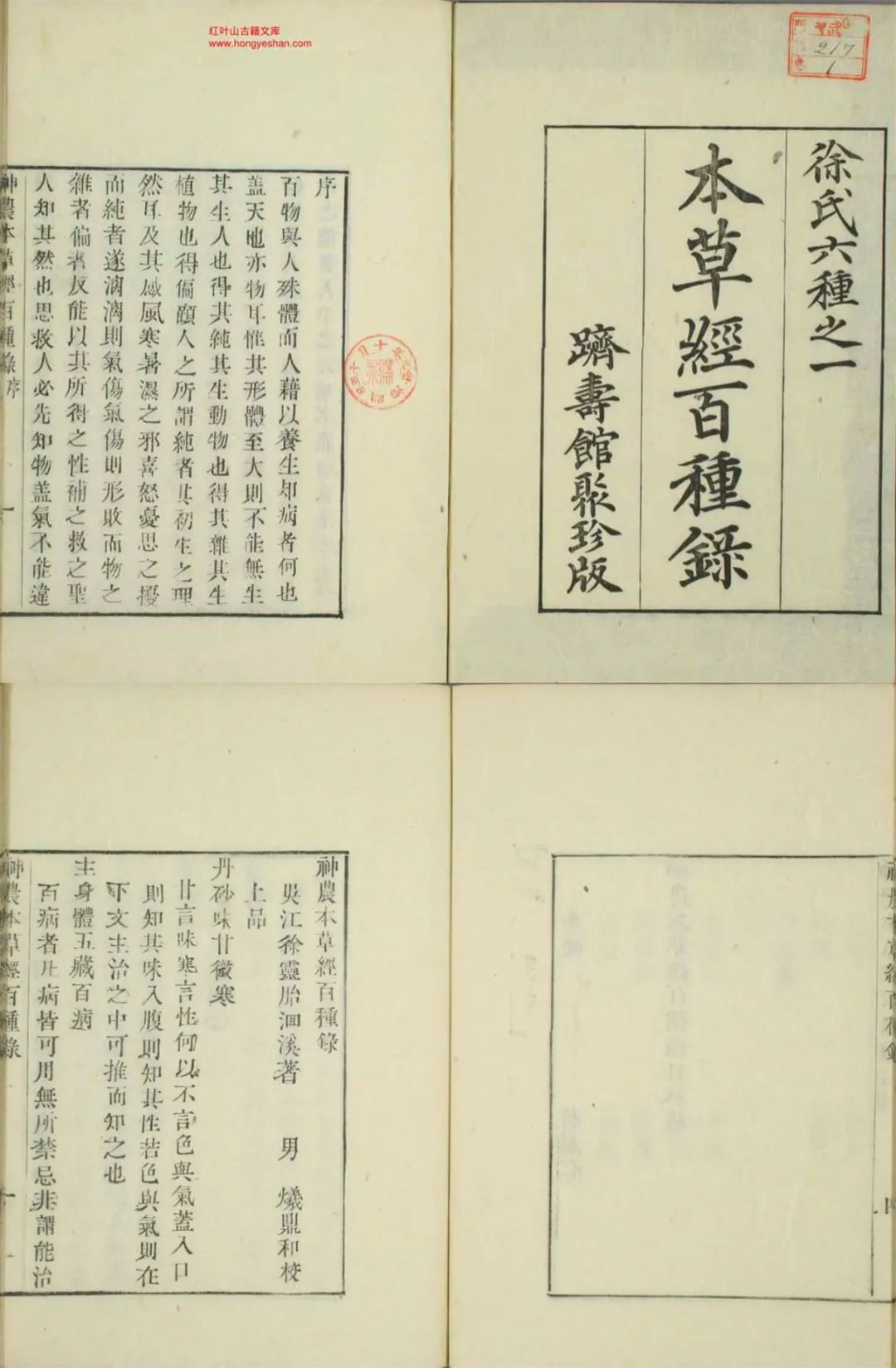
Authored by Xu Dachun, this book was published in the first year of the Qianlong era (1736). It consists of only 1 volume, listing 100 medicinal substances from the Shen Nong Ben Cao Jing, arranged by quality. The original text of the Shen Nong Ben Cao Jing had been lost, so its content was derived from the Jing Shi Zheng Lei Bei Ji Ben Cao revised in the second year of the Daoguang era (1108). Aside from place names, the remaining content is annotated for clarification, with additional comments following each medicinal entry. The book aims to “clarify medicinal properties and elucidate meanings.”
Ben Cao Cong Xin
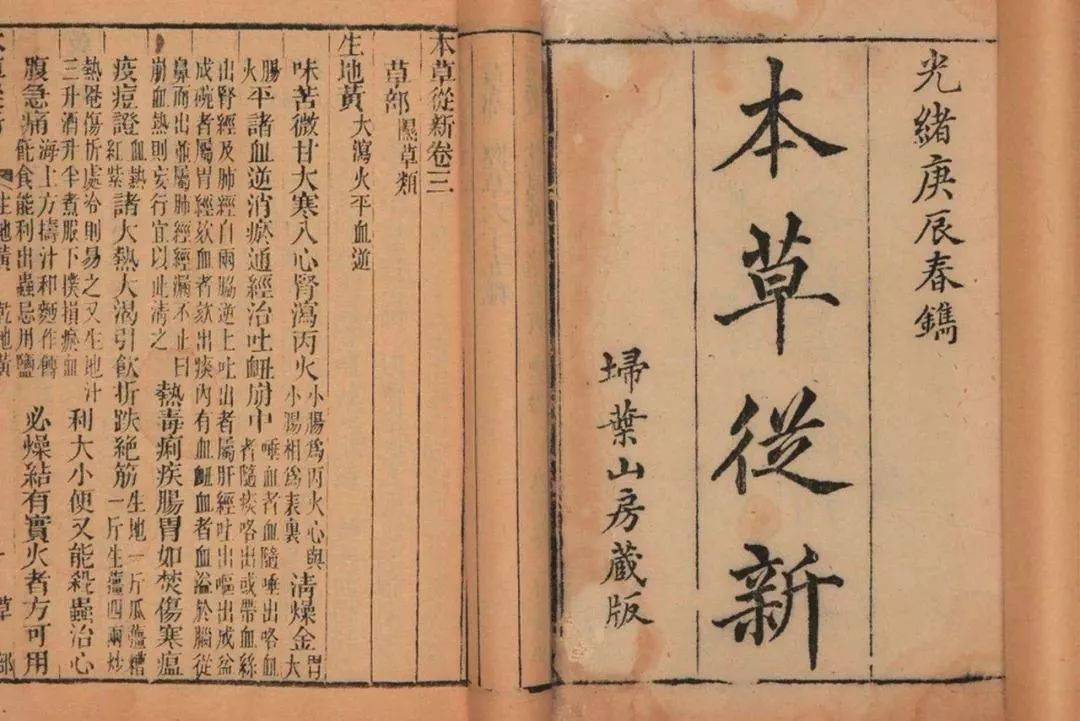
Authored by Wu Yiluo, this book was completed in the twenty-second year of the Qianlong era (1757) and is a widely circulated clinical practical materia medica from the Qing Dynasty. It includes over 720 medicinal substances, organized according to the classification method of the Ben Cao Gang Mu, with content largely based on the author’s experiences and extensive summaries of clinical applications by various physicians throughout history. For different varieties of the same medicinal substance, it distinguishes their potency, properties, and efficacy, highlighting differences in effects. New additions include commonly used medicines from the early Qing Dynasty such as bird’s nest, Cordyceps, Codonopsis pilosula, and American ginseng.
Ben Cao Gang Mu Shi Yi
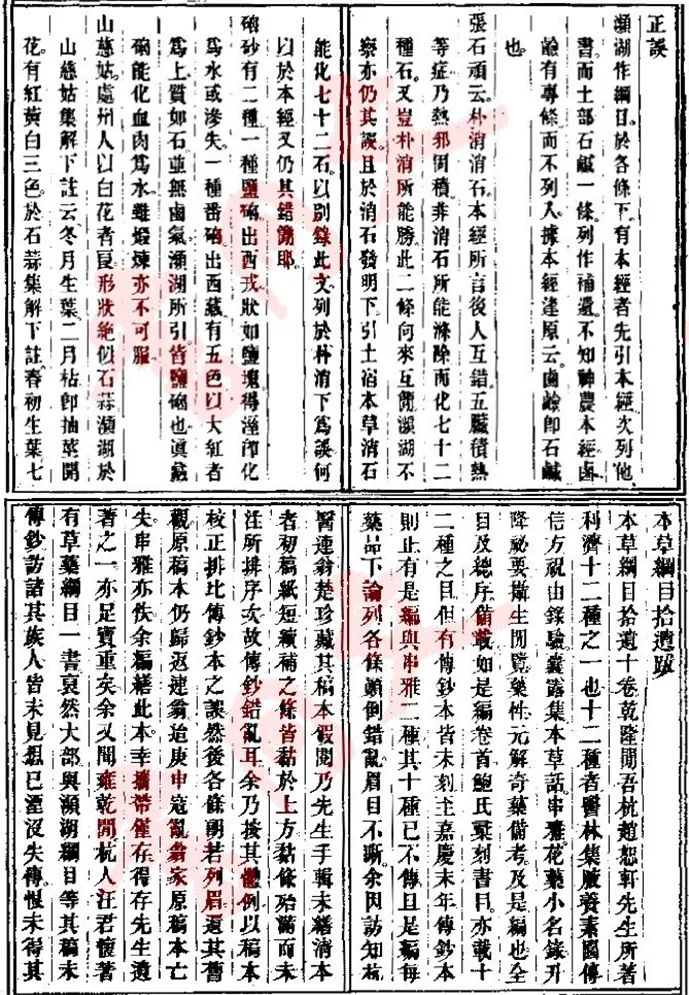
Authored by Zhao Xueming, this book’s first draft was completed in the thirtieth year of the Qianlong era (1765), with subsequent additions made over 38 years, the latest being in the ninth year of the Jiaqing era (1803). In the late Jiaqing era, Zhang Yingchang compiled and edited Zhao’s manuscript, which was first published in the third year of the Tongzhi era (1864). It consists of 10 volumes, with the first volume including a preface, general principles, a table of contents, and corrections. The “corrections” section addresses 34 errors in the Ben Cao Gang Mu. The classification of medicinal substances generally follows the order of the Ben Cao Gang Mu, including 716 substances and 205 additional entries, totaling 921. The book records many substances for the first time, such as Qian Nian Jian, Pang Da Hai, Lei Gong Teng, Wan Nian Qing, San Qi, Yi Zhi Hao, and Xue Lian Hua, as well as some foreign medicines like Jin Ji Le (Quinine), Kang Shui, Bi Chong Shui, and various medicinal tinctures. The author emphasizes field investigations, interviews, and personal cultivation for observation, providing detailed descriptions of the origin, shape, efficacy, and identification of the medicinal substances, making it another important materia medica work following the Ben Cao Gang Mu.

Examples of Different Categories of Materia Medica Literature from the Ming and Qing Dynasties
Recommended Major Works and Editions of Materia Medica Literature from the Ming and Qing Dynasties:
1. Dian Nan Ben Cao / (Ming) Lan Mao; compiled by the organizing team. – Kunming: Yunnan People’s Publishing House, 1978.
2. Imperial Compiled Essentials of Materia Medica / (Ming) Liu Wentai et al.; edited by Chen Renshou, Hang Aiwu. – Shanghai: Shanghai Scientific and Technological Publishing House, 2005.
3. Ben Cao Gang Mu (Jinling Edition) / (Ming) Li Shizhen. – Shanghai: Shanghai Scientific and Technological Publishing House, 1993.
4. Ben Cao Gang Mu / (Ming) Li Shizhen; edited by Liu Hengru, Liu Shanyong. – Beijing: Huaxia Publishing House, 1998.
5. Ben Cao Hui Yan / (Ming) Ni Zhu Mo. First published in the first year of the Tai Chang era (1620); edited by Dai Shen, Chen Renshou, Yu Shun. – Shanghai: Shanghai Scientific and Technological Publishing House, 2005.
6. Shi Wu Ben Cao / (Ming) Yao Kecheng. – Beijing: People’s Health Publishing House, 1994.
7. Ben Cao Jing Shu / (Ming) Miao Xiyong. – Yangzhou: Jiangsu Guangling Ancient Books Publishing House, 1980; see “Wu Zhong Yi Ji: Fang Yao Lei.” – Nanjing: Jiangsu Scientific and Technological Publishing House, 1993.
8. Yao Pin Hua Yi / (Ming) Jia Suoxue, Li Yanshi; Kangxi edition; Daoguang twenty-eighth year (1848) edition; Guangxu thirty-year (1904) Beijing Yuwen Bookstore lead printing edition, Tianjin Wenhua Printing House lead printing edition.
9. Ben Cao Chong Yuan / (Ming) Zhang Zhizong. – Beijing: China Traditional Chinese Medicine Publishing House, 1992.
10. Ben Cao Shu / (Ming) Liu Ruojin; annotated by Zheng Huailin et al. – Beijing: Traditional Chinese Medicine Ancient Books Publishing House, 2005.
11. Ben Cao Bei Yao / (Ming) Wang Ang. – Beijing: China Traditional Chinese Medicine Publishing House, 1998.
12. Ben Jing Feng Yuan / (Qing) Zhang Lu. – Beijing: China Traditional Chinese Medicine Publishing House, 1996; see: Zhang’s Medical Communication. – Beijing: China Traditional Chinese Medicine Publishing House, 1995.
13. Ben Cao Jing Jie Yao / (Qing) Yao Qiu. – Shanghai: Shanghai Health Publishing House, 1958.
14. Shen Nong Ben Cao Jing Bai Zhong Lu / (Qing) Xu Dachun. – Beijing: People’s Health Publishing House, 1956.
15. Changsha Yao Jie / Huang Yuanyu; edited by Ma Ruiting et al. See: Huang Yuanyu’s Eleven Medical Books – Beijing: People’s Health Publishing House, 1990.
16. Ben Cao Cong Xin / (Qing) Wu Yiluo. – Beijing: People’s Health Publishing House, 1990.
17. De Pei Ben Cao / (Qing) Yan Jie, Shi Wen, Hong Wei. – Beijing: China Traditional Chinese Medicine Publishing House, 1997.
18. Ben Cao Qiu Zhen / (Qing) Huang Gongxiu. – Shanghai: Shanghai Scientific and Technological Publishing House, 1987.
19. Ben Cao Gang Mu Shi Yi / (Qing) Zhao Xueming. – Beijing: People’s Health Publishing House, 1957, 1965, 1983.
20. Jing Zhu Ben Cao / (Qing) Di Ma Er Dan Zeng Peng Cuo. – Shanghai: Shanghai Scientific and Technological Publishing House, 1986.
Thus, the knowledge points of Issue 19 with accompanying audio have been sent. Did you get it √?
All images in this article are sourced from the internet. If there is any infringement, please contact for removal.

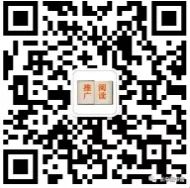

Content Source: Chen Xi
Editor: Wang Xin
Reviewer: Liu Dawei
Produced by: Changchun University of Traditional Chinese Medicine Library

